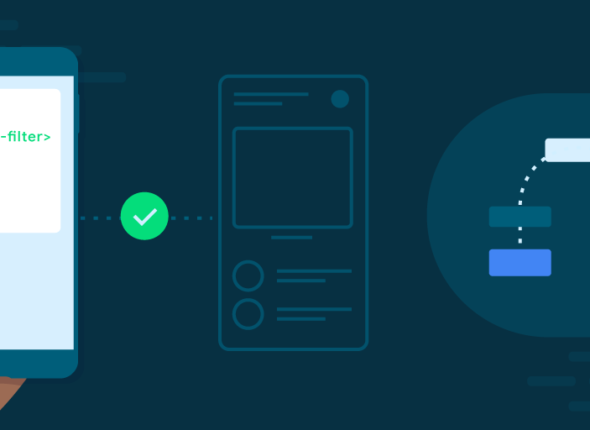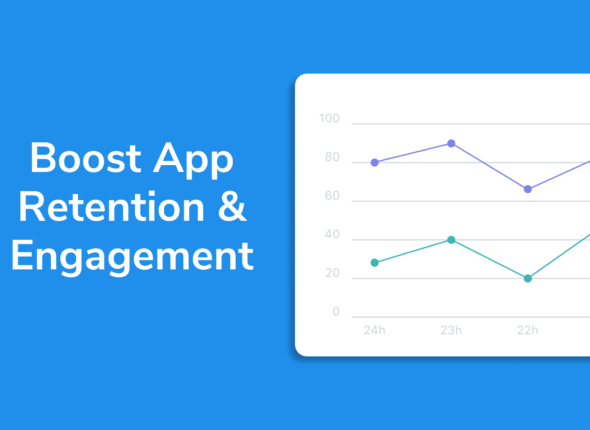Android is the most distinguished working gadget worldwide. This is due to the fact Android apps are the natural gateways for digital-targeted corporations trying to scale and connect with wider audiences. And by the time you read this newsletter, Android can have obtained over 3 billion active customers, which might additionally cowl 75% of the total app improvement marketplace share.
One of the most crucial factors to recognize while selecting Android apps is its normal improvement value.
Whilst we talk about Android app improvement costs, more than one elements influence it, even though the common price is between USD 20,000 and USD 500,000, information the value-impacting factors is an critical tenet. So, in case you’re an app investor or an bold appreneur estimating the common cost of Android app development, this article is for you. Right here, you’ll analyze everything from the factors affecting the overall app development costs to its breakdown.
Why Choose Android App Development?
Choosing Android app development offers several compelling advantages, especially in the context of the rapidly growing mobile ecosystem. Here’s why Android app development is a popular and strategic choice for developers, businesses, and entrepreneurs:
1. Wide Market Reach
- Largest User Base: Android is the most widely used mobile operating system globally, with a market share that surpasses iOS. Developing for Android allows you to reach a vast and diverse audience across different regions, including emerging markets.
- Global Penetration: Android devices are available at various price points, making them accessible to a broad demographic, which helps in expanding your app’s reach.
2. Open Source Platform
- Flexibility: Android’s open-source nature allows developers to access the core code and customize the operating system according to specific needs, providing greater flexibility in app development.
- Community Support: The open-source community offers extensive resources, libraries, and tools that can accelerate development and innovation.
3. Variety of Devices
- Device Diversity: Android runs on a wide range of devices, including smartphones, tablets, wearables, smart TVs, and more. This variety allows developers to create apps that cater to different device types and form factors.
- Customization and Innovation: The diverse hardware ecosystem encourages innovation, as developers can create unique experiences tailored to specific devices (e.g., foldable phones, smartwatches).
4. Google Integration
- Google Services: Android provides seamless integration with Google services, such as Google Maps, Google Drive, and Google Assistant, enhancing app functionality and user experience.
- Cloud and AI Capabilities: Developers can leverage Google’s cloud services and AI tools, such as Firebase and TensorFlow, to build robust, scalable, and intelligent applications.
5. High Customization and Personalization
- UI/UX Flexibility: Android allows for a high degree of customization in user interfaces, enabling developers to create personalized and unique user experiences.
- Custom ROMs: Developers can create custom ROMs or tailor the Android OS to suit specific business needs, providing a distinctive and branded user experience.
.

Factors Affecting Android App Development Costs
Main factors affecting the cost of android app dvelopment are as follows :-
1. App Complexity
- Basic Apps: These are simple apps with minimal features, such as a calculator or a basic information app. Development costs are typically lower.
- Medium Complexity Apps: These include more advanced features like user authentication, payment gateways, and integration with APIs. Examples include e-commerce apps or social media platforms.
- High Complexity Apps: Apps with complex functionalities such as real-time data processing, custom animations, AI integration, or advanced security features. Examples include gaming apps, apps with AR/VR, or highly customized enterprise solutions.
2. Design and User Experience (UX)
- Custom Design: A unique and highly customized UI/UX design will require more time and expertise, increasing costs.
- Standard Templates: Using pre-built design templates can reduce design time and costs.
- Animations and Graphics: Advanced animations, custom icons, and graphics add to the development time and cost.
3. Number of Features and Functionalities
- Core Features: Essential features like user login, push notifications, and social sharing are common in most apps and generally less costly.
- Advanced Features: Features like real-time chat, GPS navigation, offline mode, or integration with third-party services (e.g., payment gateways, social media) can significantly increase development costs.
- Backend Development: Complex features often require a robust backend, which adds to the development effort and cost.
4. Platform and Device Compatibility
- Device Range: Developing an app compatible with a wide range of Android devices, including different screen sizes and OS versions, can increase the cost.
- Operating System Versions: Ensuring compatibility with older versions of Android adds complexity and costs, as it requires more testing and optimization.
- Cross-Platform Development: If you plan to develop the app for both Android and iOS, the cost will increase, although using cross-platform frameworks like Flutter can help reduce expenses.
5. Development Team Location
- In-House vs. Outsourcing: In-house development might cost more in regions with high labor costs, whereas outsourcing to countries with lower labor costs can reduce expenses.
- Geographical Location: Developers in North America or Western Europe typically charge higher rates compared to those in Eastern Europe, Asia, or Latin America.
6. Development Timeframe
- Project Duration: Tight deadlines may require a larger team or more experienced developers, increasing costs.
- Agile vs. Waterfall: Agile methodologies, which involve iterative development, may incur more costs in the long run if multiple iterations are required.
7. Third-Party Integrations
- APIs and SDKs: Integrating third-party services (e.g., payment gateways, social media, analytics tools) adds to the complexity and cost, especially if custom integration is required.
- External Services: Using cloud services, databases, and other external services typically incurs ongoing costs beyond initial development.
8. Security Requirements
- Basic Security: Standard security features like SSL encryption and basic data protection are essential and relatively low-cost.
- Advanced Security: Apps handling sensitive information (e.g., financial, healthcare) may require advanced security measures, such as two-factor authentication, encryption, and compliance with regulations like GDPR, which increase costs.
9. Testing and Quality Assurance (QA)
- Device Testing: Testing the app across multiple devices and OS versions is time-consuming but necessary for a smooth user experience, increasing costs.
- Automated vs. Manual Testing: Automated testing tools can reduce testing time and costs but may not cover all scenarios, necessitating manual testing.
10. Post-Launch Support and Maintenance
- Bug Fixes and Updates: Ongoing costs include fixing bugs, updating the app for new OS versions, and adding new features based on user feedback.
- Scaling and Performance Optimization: As the app grows, it may require scaling the backend, optimizing performance, and improving user experience, all of which add to the long-term costs.
11. Marketing and Distribution
- App Store Fees: While the Google Play Store charges a one-time registration fee, promoting the app and ensuring it ranks well may involve additional costs.
- Marketing Campaigns: Costs for app promotion, advertising, and user acquisition strategies need to be factored into the overall budget.
CREATING APPS IS NO LESS THAN CREATING ART.
LEARN APP DEVELOPMENT WITHOUT CODING WITH APPBANAO
Hidden Costs in Android App Development
When planning an Android app development project, it’s essential to account for not only the obvious costs but also potential hidden costs that can impact the overall budget. Here’s a look at some of these hidden costs:
- App Maintenance: Ongoing bug fixes, updates for OS compatibility, and feature enhancements.
- Backend Costs: Server hosting, database management, and third-party API usage fees.
- App Store Fees: Google Play commissions and compliance with store policies.
- Security: Implementing encryption, meeting regulatory requirements like GDPR or HIPAA.
- User Acquisition: Marketing, user onboarding, and retention strategies.
- Testing: Cross-device testing, automated testing tools, and beta programs.
- Performance Optimization: Load balancing, infrastructure scaling, and third-party services.
- Legal Fees: Intellectual property protection, third-party licenses.
- Localization: Translation, cultural adaptation for different markets.
- Project Delays: Scope creep, rework, and team management issues.
These factors can significantly impact the overall budget beyond the initial development costs.
Cost-Effective Strategies for Android App Development

Here are some cost-effective strategies for Android app development:
Define Clear Requirements
- Start with a well-defined project scope to avoid scope creep, which can lead to unexpected costs.
Prioritize Essential Features
- Focus on building a Minimum Viable Product (MVP) with core features first. You can add more features later based on user feedback.
Use Cross-Platform Development Tools
- Consider frameworks like Flutter or React Native to build apps that work on both Android and iOS, reducing development time and costs.
Leverage Open-Source Libraries
- Utilize free, open-source libraries and tools to avoid the cost of developing features from scratch.
Outsource Wisely
- Outsource development to regions with lower labor costs, but ensure you hire experienced developers to maintain quality.
Automate Testing
- Use automated testing tools to reduce the time and cost associated with manual testing, while maintaining app quality.
Opt for Cloud Services
- Use cloud-based services for backend infrastructure, which can be more cost-effective and scalable than maintaining your own servers.
Focus on UI/UX Simplicity
- Keep the design simple and user-friendly. Complex designs often require more development time and resources.
Plan for Incremental Updates
- Implement features in stages, spreading the cost over time and allowing for early monetization of the app.
Monitor and Optimize Resources
- Regularly review your development process, tools, and team efficiency to identify areas where you can cut costs without compromising quality.
These strategies can help you manage and reduce costs while ensuring the development of a high-quality Android app

Tips for Reducing App Load Time and Memory Usage
In today’s fast-paced digital world, users expect mobile apps to perform flawlessly, load quickly, and...
- October 17, 2024
- Com 0




